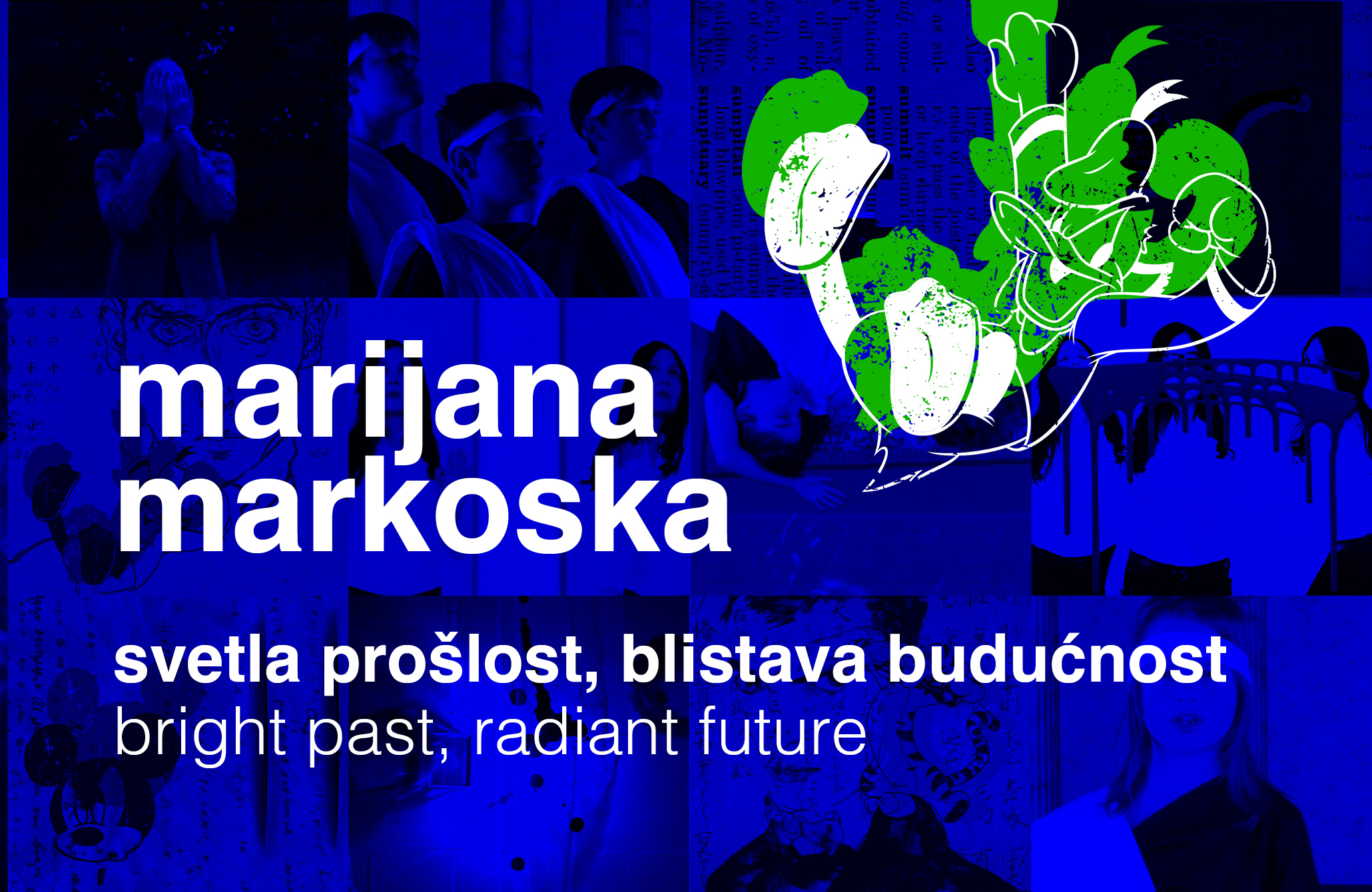
NIGHT OF MUSEUMS: MARIJANA MARKOSKA – BRIGHT PAST, SHINY FUTURE
On Saturday, May 18, starting at 8 PM, as part of the Night of Museums, Klara i Rosa (Petefi Šandora 15) will present an exhibition by artist Marijana Markoska titled "Bright Past, Shiny Future." The exhibition will be opened by Subotica artist Jelena Grujičić, and the program will continue until midnight.
.
In the exhibition "Bright Past, Shining Future," Marijana Markoska will showcase works created between 2007 and 2023. The exhibited works open space for a critical reassessment of the dual role of the culture of memory as a transitional paradigm, which, on one hand, blurs the present due to its focus on the past, and on the other, highlights the emancipatory potential and opens a view towards the horizon of the future. In her works, Markoska establishes an open dialogue with ancient, modernist, mass, and underground culture, erasing constructed relationships between "high and low art," playing with their various media manifestations.
.
Operation "Image"
.
Video, 4:3, 1’ 11”, 2009.
Operation Image is a collaborative video work by Marijana Markoska and Katarina Kaplarski Vuković, showcasing artists producing images in the medium of moving pictures. Through performative brushstrokes, chiseling, fingers, droplets, and paste-like applications, they paint an image on glass, which they subsequently wipe away with a tissue. The black-and-white recording of this action leaves the observer deprived of the colors fundamental to the painting. With this seemingly simple gesture, they examine the position of painting in contemporary art and society, placing it in a state of impermanence. The screen serves as a fictive wall between the artists and the observer, simultaneously being the site of creation and disappearance, depicting a society in a dual role—one that primarily renders content production meaningless while working on its reanimation.
.
Salute (George Bernard Shaw)
Two-channel video installation, 16:9, 5’ 09”, 2007.
In this two-channel video installation, the first video is a found recording of the famous writer and eugenics advocate George Bernard Shaw during his first visit to the United States. The second video features Markoska reenacting his gestures, drawing further attention to his speech. Shaw discusses fame and how through cinema as a medium, his readers can see him and gain a more realistic idea of who he is. In a recording made in 1929, he addresses an undefined audience in the future, emphasizing the importance of facial expressions by citing examples like Mussolini's furrowed brow, which leads people to form incorrect impressions of him as a bad man, at one point even saluting.
.
Two walls
Digital prints, 2016/23
In 2016, for the exhibition "Two Walls" at CZKD (with Aurelie William Levaux), Marijana Markoska treated the covers of albums important to punk and new wave as landscapes she visits, inserting images of her body into the spaces of the protagonists of these covers. By multiplying herself and adapting poses and attitudes from the covers, Markoska "experienced" this dimension of the rebellious legacy that was available to her generation through audio cassettes and compilations. The entirety of the statement in the format of an album or record held significant visual components, later formatted and treated differently in other forms of transmission. The paraphrases of album covers became a space for recording and verifying whether we exist in that history, whether we recognize ourselves in it today, and whether there is something relevant in the rebellion, music, and art that we considered formative.
.
Antigena 3D
Video, 16:9, 4’ 34”, 2009.
Lenticular prints, 2009.
The digital video "Antigena 3D" depicts children interpreting a selected text from Sophocles' "Antigone" in a digital 3D environment. The title "Antigena" is ambiguous and plays on words primarily associated with this ancient tragedy. At the time of the video's creation, film scenography set in real space was increasingly replaced by an idealized cyber environment. Markoska's inversion lies in the fact that her computer-generated theatrical backdrop aesthetically relies on well-known classical patterns. Through both the title and the digital medium, she points to the exponential rise of science in society, from prehistoric "selective breeding" to molecular biology and genetics, which has the societal consequence of hyper-stimulation of children.
.
Studies of Ancient Paper
Digital prints, 2020/23.
Markoska first presented "Studies of Ancient Paper" in the cultural supplement Beton during the boycott of a group of writers nominated for the NIN award in 2020. This boycott appeared online in JPEG format, representing worn, ancient paper with a list of names of writers participating in the boycott. The format of the media dissemination of the boycott was not parodically constructed, but rather chosen for its desired effect of antiquity, and thus the JPEG of ancient paper was invoked to carry "pasted" signatures. The editorial team of Beton invited Markoska to explore antiquity in JPEG format and contribute an original study that was printed on newsprint. In this initial series, she utilized motifs of Disney characters and continued her research through references to modernist art. As a result of measuring the antiquity of paper and the antiquity of its virtual image, the artist also obtained a surplus, i.e., misunderstandings of symbols and artistic practices in their reduced representations.
.
Marijana Markoska (1975, Belgrade) completed her undergraduate studies in painting (2001), master's studies in digital art (2007), and doctoral artistic studies in digital art (2011) at the University of Arts in Belgrade. Using the culture of memory, she engages with identification, personal and social identity, primarily utilizing computer art and video as mediums, connecting fine and visual arts with popular culture.
